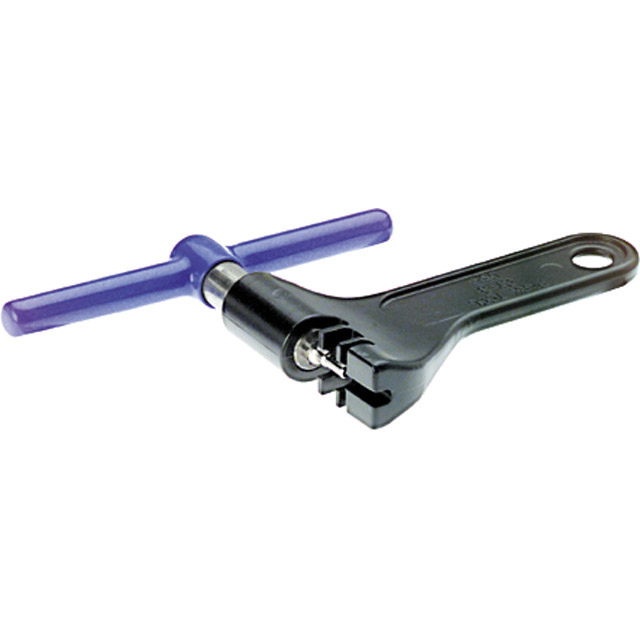There are three main bicycle-specific tool manufacturers. They are Park Tool, Pedro’s, and Spin Doctor. There are others (Abbey, Avenir, IceToolz, Super B, Titan, etc.), but they aren't mentioned as often. Many will say that Park Tool is the gold standard, but those same individuals will admit that certain tools from other manufacturers are superior to those available from Park. For simplicity, and because most of my tools are Park, the prices and pictures represent Park Tools.
There are basically two methods to obtaining your tools. You can purchase a complete set, or buy the tools one-by-one. Typically, buying a set will be less expensive, but you will end up owning tools that you didn’t necessarily need (and perhaps missing some tools that you did). Once you know which tools you need, you can compare the cost of a complete set with purchasing them piece-by-piece.
Some of the tools you’ll need are specific to the bike and components you own (e.g. a bottom bracket tool). But many of the tools are universal (e.g. a chain break). I’ve listed the tools I have found useful and sorted them into four categories, irrelevantly utilizing the acronym CARB to define Cleaners, Adjusters, Replacers, and Builders.
The Cleaner
| Item | Price | Description | |
| Chain lube | $ | 8 | Lubrication for the chain |
| Brush set | $ | 18 | Brushes to scrub cassette, chainrings, chain, and derailleurs |
| Degreaser | $ | 18 | Removes grease from cassette, chainrings, chain and derailleurs |
| Chain scrubber | $ | 24 | Scrubs and degreases the chain |
| Total | $ | 68 | |
 Brush Set |
 Chain Scrubber |
The Adjuster
| Item | Price | Description | |
| Spoke wrench | $ | 7 | Replace or tighten spokes and true wheels |
| Anti-sieze compound | $ | 8 | Reduce friction in threaded connections (e.g. pedals) |
| Grease | $ | 8 | For moving connections (e.g. headset and bottom bracket) |
| Carbon paste | $ | 13 | For tight carbon-to-carbon connections (e.g. seat post) |
| Pedal wrench | $ | 14 | Tighten, remove, or replace pedals |
| 5 N·m torque wrench | $ | 28 | For 5 N·m torque requirements (e.g. stem and handlebars) |
| 0-70 N·m torque wrench | $ | 45 | For higher-torque requirements (e.g. pedals and crankset) |
| Total | $ | 123 | |

Spoke Wrenches
 Torque Wrench (5 N·m) |
 Torque Wrench (0-70 N·m) |
The Replacer
| Tool | Price | Description | |
| Cassette lockring tool | $ | 8 | Replace the cassette |
| Chain checker | $ | 10 | Check to see if chain needs to be replaced |
| Chain whip | $ | 20 | Holds the cogs while using the cassette lockring tool |
| Bottom bracket tool | $ | 21 | Used to install a new bottom bracket |
| Chain tool | $ | 30 | "Breaks" the chain so it can be replaced |
| Cable/housing cutter | $ | 33 | Cut cables and cable housing for shifting and brakes |
| Stand | $ | 180 | Holds the bike secure above the ground |
| Total | $ | 302 | |
 Cassette Lockring Tool |
 Chain Whip |
 Chain Checker |
 Chain Tool |
 Stand |
 Cable/housing Cutter |
The Builder
| Tool | Price | Description | |
| Carbon saw blade | $ | 9 | Cut the carbon steerer tube and carbon seat tube |
| Saw guide | $ | 35 | Ensure straight steerer tube and seat tube cuts |
| Truing stand | $ | 99 | Holds wheel and indicates out-of-true locations |
| Headset press | $ | 153 | Install headset and bottom bracket |
| Total | $ | 296 | |
 Saw Guide |
 Truing Stand |
Other
Some other tools and accessories you’ll need that you probably already own include electrical tape, hex wrenches, open-end wrenches, rags, scissors, screwdrivers, and zip ties. There are also some accessories that make life easier, like a handlebar holder ($18), work tray ($32), and cable stretcher ($40). Cable Stretcher |
 Handlebar Holder |
Did I forget anything? Let me know and I'll add it to the list.




